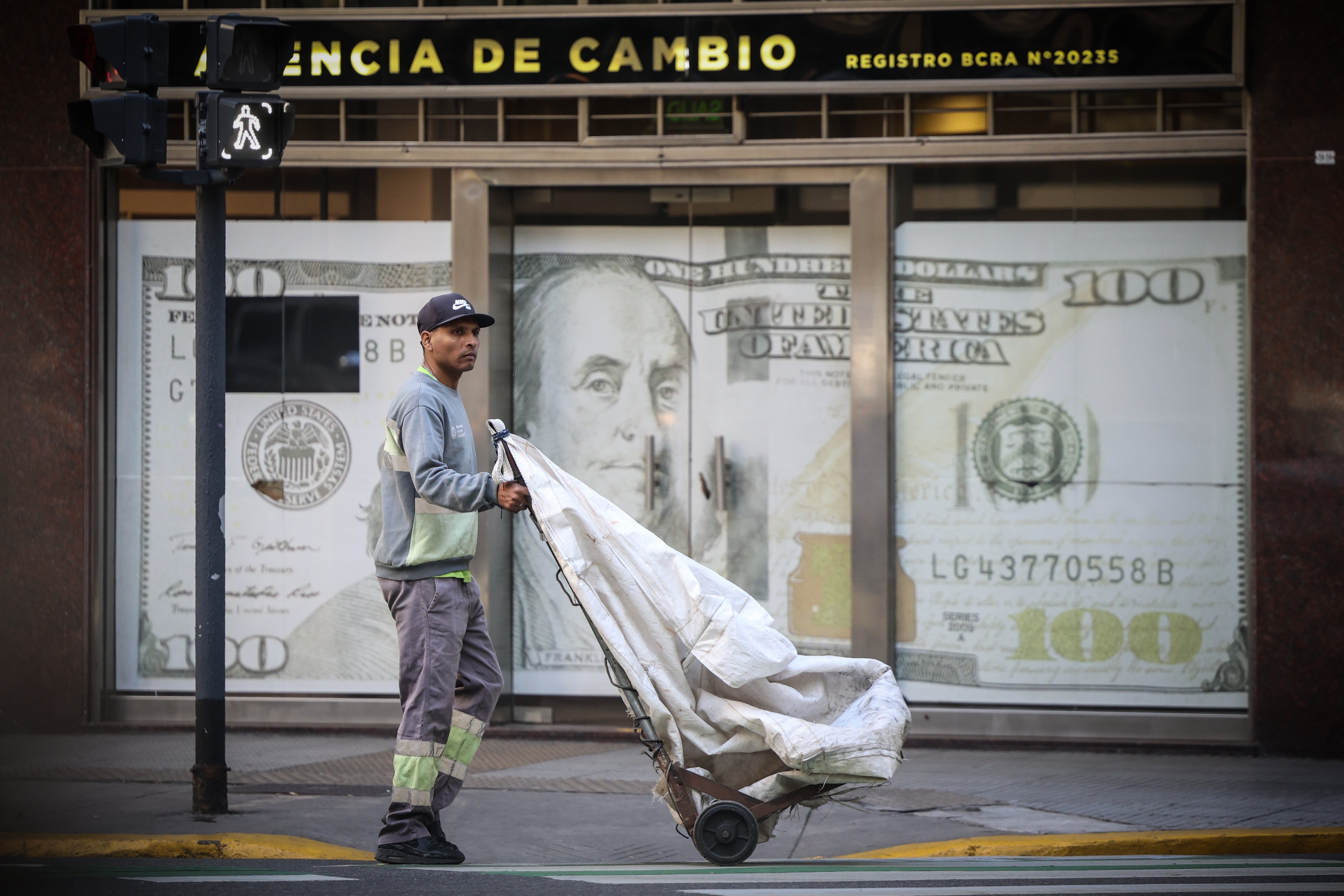Is the ‘Trump shock’ the end of dollar hegemony?

On April 30, Donald Trump reached the 100-day mark of his second term as US president. In foreign exchange markets, the verdict is damning. Since Trump’s inauguration, the US dollar index – a gauge of the greenback’s performance against a basket of its peers – has plunged nearly 9 per cent, its worst performance since Richard Nixon unpegged the US dollar from gold in 1971. While the “Nixon shock” ushered in a new age of freely floating currencies and increased capital flows that preserved and enhanced the dollar’s role as the dominant reserve currency, the Trump administration is questioning the benefits of the dollar’s reserve status on the grounds that it has harmed US competitiveness and inflicted damage on the manufacturing sector. Everything Trump has done since returning to the White House – launching a reckless trade war, compromising the US Federal Reserve, eviscerating the rule of law and pushing a giant tax cut package that would add trillions of dollars to the fiscal deficit – has undermined support for the dollar. According to Bank of America’s latest global fund manager survey, the percentage of respondents expecting the dollar to continue to depreciate has risen to its highest level since 2006. Multiple major currencies have strengthened against the US dollar since Trump’s inauguration, including the Mexican peso and the Canadian dollar, which have borne the brunt of Trump’s trade aggression towards America’s allies. The pressure on US assets this year has been fierce. International investors have been selling US Treasury bonds and equities over the past two months. An analysis of daily inflows by George Saravelos of Deutsche Bank shows that foreign investors, especially in Europe, “remain on a buyers’ strike on US assets”, posing a significant challenge to the dollar since the US relies on foreign investors to help fund its large current account and fiscal deficits. The question is whether sharper and sustained outflows start to threaten the US dollar’s pre-eminence. That America’s safe-haven status is being called into question shows how much Trump’s eagerness to upend decades of economic and foreign policy has eroded confidence in US markets. “For the first time in my career, I’m hearing widespread scepticism about the competency of US policymakers,” said Dario Perkins at TS Lombard. At the very least, this increases the risk of further selling pressure, especially since the US dollar is overvalued against its main rivals, with the dollar index up some 37 per cent since its low in March 2008. A bear market for the US dollar is overdue. The steep decline in the dollar is a much-needed reprieve for emerging markets. The MSCI Emerging Market Currency Index has risen sharply since Trump’s inauguration, experiencing its strongest rally since 2017, according to Bloomberg. Emerging market central banks will find it easier to loosen monetary policy to help offset the growth-dampening effects of the trade shock without worrying about excessive currency depreciation. In a report on April 24, Goldman Sachs said markets are having “an easier time pricing [interest] rate relief outside of the US, as the rest of the world does not face the same trade-off from tariffs of lower growth but higher inflation”. In fact, investors are turning bullish on emerging market assets. Deutsche Bank expects the Chinese yuan to strengthen further against the dollar in the coming months, underpinned by more forceful stimulus measures and Beijing’s prioritisation of financial and economic stability. However, there’s a difference between a dollar bear market and the end of dollar hegemony. First, the plunge in the US dollar has, in the words of Bank of America, “evolved from a cyclical story to a structural one”. Simply put, investors are not just bearish on the US dollar but are also concerned about the safety of US assets. If concerns about the status of the US as a safe haven intensify – the biggest threat to markets right now – the risk of a full-blown financial crisis will become more acute, putting markets the world over under pressure. That this hasn’t happened suggests most investors believe the US bond market is powerful enough to act as a check on Trump’s policies. Tellingly, Trump has backed down numerous times since the start of his second term even though the sell-off in bond markets was short-lived. Second, and most importantly, the US dollar has no obvious successor. It accounts for nearly 60 per cent of foreign reserve holdings worldwide, over half of foreign trade invoices and almost 90 per cent of foreign exchange transactions. Meanwhile, other major currencies have bigger problems. The euro is a single currency shared by 20 different countries, the yuan is not fully convertible, while other currencies, such as the Japanese yen and Swiss franc, are too small to challenge the dollar. Third, investors betting on the end of dollar hegemony should be careful what they wish for. The lack of viable alternatives to the US dollar – the keystone of global trade and finance along with US Treasury bonds – makes the loss of the dollar’s haven status a frightening prospect. Such a scenario could lead to rival currency blocs, more protectionism, stronger calls for capital controls and greater financial instability. The global economy is stuck with “king dollar” no matter how tarnished its crown is. How long it takes Trump to realise that a loss of confidence in the US dollar poses a bigger threat to the US than the rest of the world is another matter.





![Fark NotNewsletter: The Cardinals are getting a new manager [FarkBlog]](https://img.fark.net/images/2013/site/farkLogo2Big.gif)
![Baptists don't like wicked fun, odds are they just don't like the competition [Followup]](https://usrimg-full.fark.net/n/n2/fark_n2KpihIkrxirzLCNuA7HaehuPO8.jpg?AWSAccessKeyId=JO3ELGV4BGLFW7Y3EZXN&Expires=1746417600&Signature=8jJzzlPUBO%2BAcbp9u4XpK29nv%2Fg%3D)












